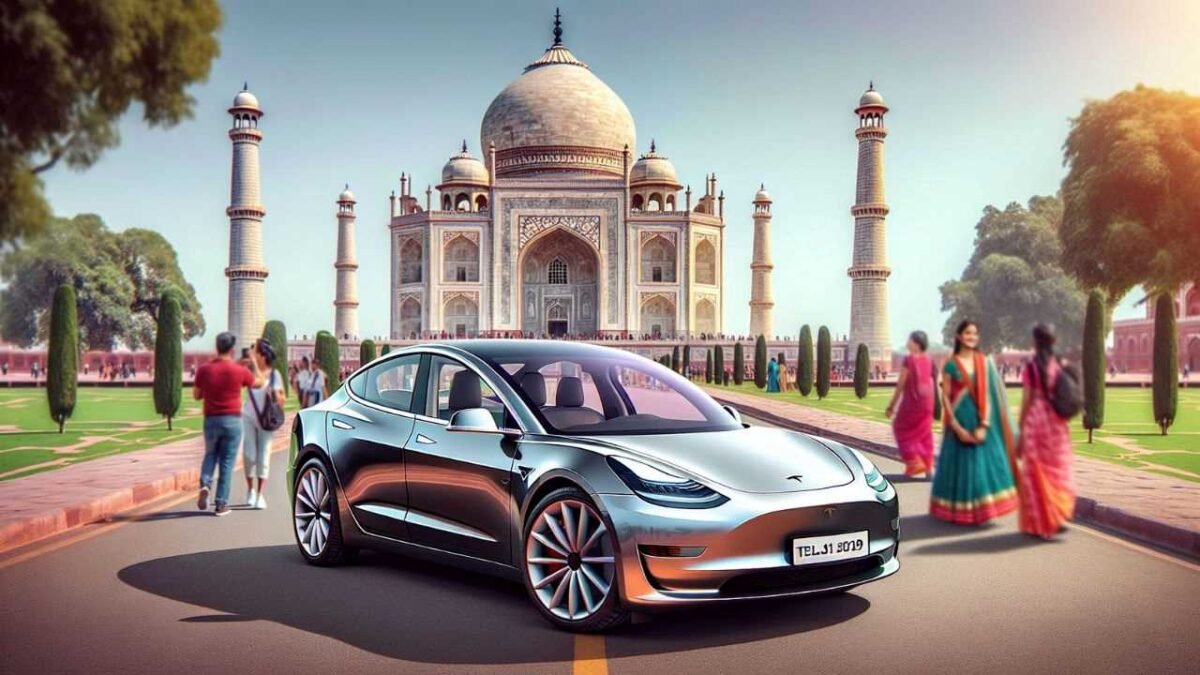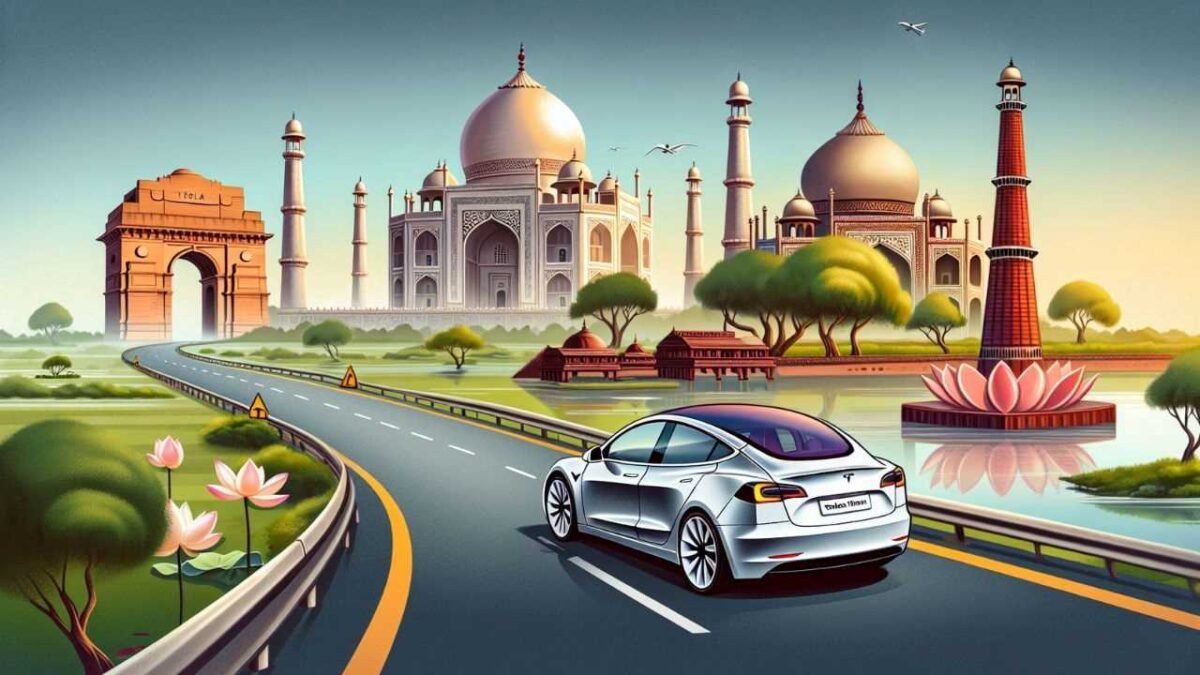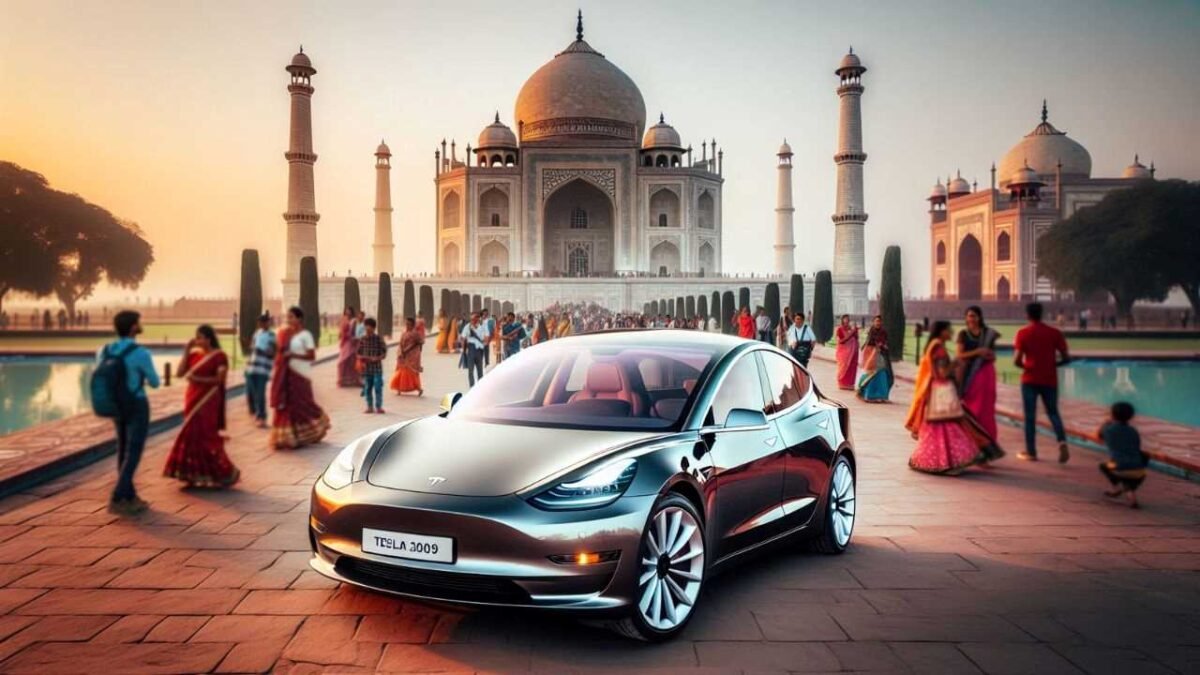Tesla in India, Discover India’s EV market dynamics & Tesla’s entry strategy. Learn about reduced import duties, local assembly requirements & policy impact. Explore Tesla’s plans, potential obstacles & government concessions.
Tesla in India
New Delhi recently reduced import duties for electric vehicle (EV) manufacturers who commit to local assembly, potentially aiding Tesla’s entry into India. Elon Musk’s firm had long campaigned for reduced taxes that they contend are among the highest globally.
Musk initially asked for upfront tax cuts from the government two years ago; however, they have since granted post-dated investment commitment and progressive localisation targets as concessions.
India’s EV market
Indian electric vehicle sales have passed the one million unit mark, with passenger car sales trailing those for two-wheelers and three-wheelers. Fleet operators and government-sponsored purchases of EVs have played an essential part in driving this growth; according to one recent report by consultancy firm Bain & Co, penetration levels will reach 40% by 2030.
Tesla will face obstacles entering India, including price competition. While working to reduce the costs associated with their electric cars, their models remain significantly more costly than traditional vehicles.
Tesla will likely focus its Indian expansion on higher income segments of the market and key states where many of its customers reside such as Haryana, Tamil Nadu, and Maharashtra.

Gujarat is also appealing to Tesla due to its proximity to ports for exporting its vehicles and has offered land near Sanand.
India has recently reduced import duties on electric vehicles (EVs) from 100% to 15%, which will enable US-based companies to more easily enter its market. New Delhi also implemented stringent localisation requirements for manufacturers aiming at safeguarding domestic manufacturing industry – these likely require them to invest at least $500 million and produce 50% of vehicles locally by year three.
Tesla’s India plans
Tesla has long targeted India as one of its primary markets for their electric vehicle business, as its rapidly-expanding middle class makes for an attractive market. Unfortunately, efforts have been hindered by high import tariffs and limited charging station availability; an Indian factory could help overcome those hurdles to compete more directly against Maruti Suzuki and similar firms in India.
Government concessions to manufacturers who agree to invest and manufacture electric vehicles locally could help Tesla break into the market more easily. Although Tesla had long advocated for such concessions from government authorities, their insistence that solid commitments be made regarding investment and manufacturing must first be fulfilled before offering such relief would grant a duty cut.
Sources familiar with the matter indicate that US electric car manufacturer Tesla could make an announcement regarding its Indian plans soon, perhaps at the Vibrant Gujarat Global Summit in January. Gujarat, Prime Minister Narendra Modi’s home state, is among several being considered for hosting a Tesla plant with an initial minimum investment expected of around $2 billion according to sources.

Tesla already operates in India via a research center and sales office located in Bengaluru and Mumbai respectively, yet does not yet possess a manufacturing plant within India’s borders. A team is currently visiting potential sites, with Telangana authorities actively courting Tesla as an investment option.
Tesla’s India factory
The new policy permits Tesla and other foreign car manufacturers to import fully-built cars at a lower rate of 15%, which will fall further to zero if retail price of car is less than $35,000. This marks an important step toward Tesla entering India’s EV market; yet, how many vehicles they will be able to sell remains unclear.
Tesla may build its initial factory in Gujarat, already home to domestic automakers such as Tata Motors and Maruti Suzuki. According to reports, Gujarat state government has offered Tesla land near Sanand, Becharaji, and Dholera – with Gujarat being close to ports allowing Tesla to export cars overseas.
Tesla’s plans for India have met with strong opposition from domestic automakers who wish for government protection for their investments. Although there have been efforts made by India’s government to promote domestic EV production, global automakers such as Tesla will most likely find no sympathy here.
Elon Musk has expressed his admiration for India and Prime Minister Narendra Modi and pledged his commitment to expanding Tesla’s presence there. He plans on meeting with the Commerce Ministry and discussing concessions that may facilitate Tesla’s entry into India’s electric vehicle (EV) market, such as waiving current tariff structures or permitting test driving and selling at reduced prices.
India’s EV policy
India’s new electric vehicle policy represents a victory for US-based Tesla. The policy will waive import taxes that are currently among the world’s highest for automakers that commit to local manufacturing of EVs, further encouraging their adoption and domestic production. CEO Elon Musk will visit India this weekend and is anticipated to announce investments and meet Prime Minister Narendra Modi during a two-day visit.
This policy allows companies to import completely knocked down (CKD) electric vehicles at a customs duty rate of 15%, significantly reduced from 70% or even 100% for cars imported as fully built units (FBUs). To qualify, manufacturers must pledge an investment of $500 million and establish a factory within three years, in addition to attaining domestic value addition (DVA) of at least 25% with plans to reach 50% within five years.
The initiative aims to lure global EV manufacturers like Tesla and turn China into an EV manufacturing powerhouse, aligning with China’s climate goals of cutting emissions intensity by 45% by 2070 and reaching net zero emissions by then. It could also help mitigate urban air pollution; but that could open the floodgates for local Chinese competitors such as BYD and Great Wall Motor.
FAQs: Tesla in India
1. How has New Delhi recently facilitated Tesla’s potential entry into India?
New Delhi has reduced import duties for electric vehicle (EV) manufacturers who commit to local assembly, thereby potentially aiding Tesla’s entry into India.
2. What has been the stance of Elon Musk’s Tesla regarding taxes in India?
Initially, Tesla had campaigned for upfront tax cuts two years ago. However, concessions granted by the government include post-dated investment commitments and progressive localization targets.
3. What is the current status of India’s EV market?
Indian electric vehicle sales have surpassed one million units, with passenger car sales trailing those for two-wheelers and three-wheelers. Fleet operators and government-sponsored purchases of EVs have been crucial drivers of this growth.
4. What are the anticipated penetration levels of EVs in India by 2030?
According to a recent report by consultancy firm Bain & Co, penetration levels are expected to reach 40% by 2030.
5. What are some obstacles Tesla might face entering the Indian market?
Tesla is likely to encounter price competition as its models remain significantly more costly than traditional vehicles. However, it may focus its expansion on higher income segments of the market and key states where its customers reside.
6. Which states in India are particularly appealing to Tesla for its expansion?
States such as Haryana, Tamil Nadu, Maharashtra, and Gujarat are attractive to Tesla due to factors like customer base, proximity to ports for exporting vehicles, and offers of land.
7. What recent policy changes have facilitated Tesla’s entry into India?
India has reduced import duties on EVs from 100% to 15%, enabling US-based companies like Tesla to enter the market more easily. Additionally, stringent localization requirements have been implemented to safeguard domestic manufacturing.
8. What are the requirements for manufacturers aiming to benefit from India’s policy changes?
Manufacturers must invest at least $500 million and produce 50% of vehicles locally by year three to qualify for the benefits of reduced import duties.
9. What are Tesla’s plans regarding its entry into India?
Tesla has long targeted India as a primary market for its electric vehicle business. It plans to establish a manufacturing presence in India to overcome hurdles such as high import tariffs and limited charging infrastructure.
10. Where might Tesla establish its initial factory in India?
Reports suggest Gujarat as a potential location due to factors like proximity to ports and offers of land from the state government.
11. What are some of the challenges Tesla faces from domestic automakers in India?
Domestic automakers have opposed Tesla’s plans, advocating for government protection for their investments. However, global automakers like Tesla are unlikely to receive sympathy from India’s government in this regard.
12. How has India’s new electric vehicle policy impacted Tesla?
India’s new policy waives import taxes for automakers committing to local manufacturing of EVs, thereby encouraging adoption and domestic production. This policy represents a victory for Tesla and aligns with its plans for expansion in India.
13. What are the key features of India’s new electric vehicle policy?
The policy allows for reduced customs duty rates for completely knocked down (CKD) electric vehicles and requires manufacturers to invest $500 million, establish a factory within three years, and achieve domestic value addition (DVA) targets.
14. How does India’s electric vehicle policy align with global climate goals?
India’s policy aims to lure global EV manufacturers like Tesla while aligning with climate goals such as reducing emissions intensity and reaching net-zero emissions. This could also mitigate urban air pollution.
15. What potential impact could India’s electric vehicle policy have on the market?
India’s policy could lead to the emergence of China as an EV manufacturing powerhouse, aligning with China’s climate goals. However, it could also open the floodgates for competition from local Chinese automakers.

